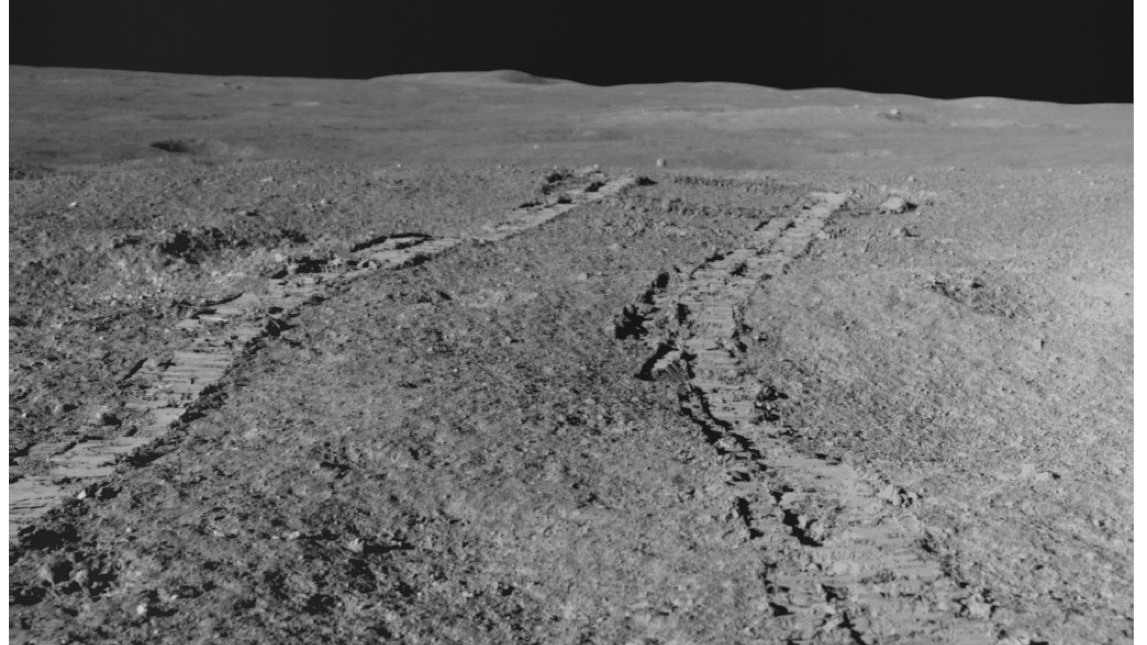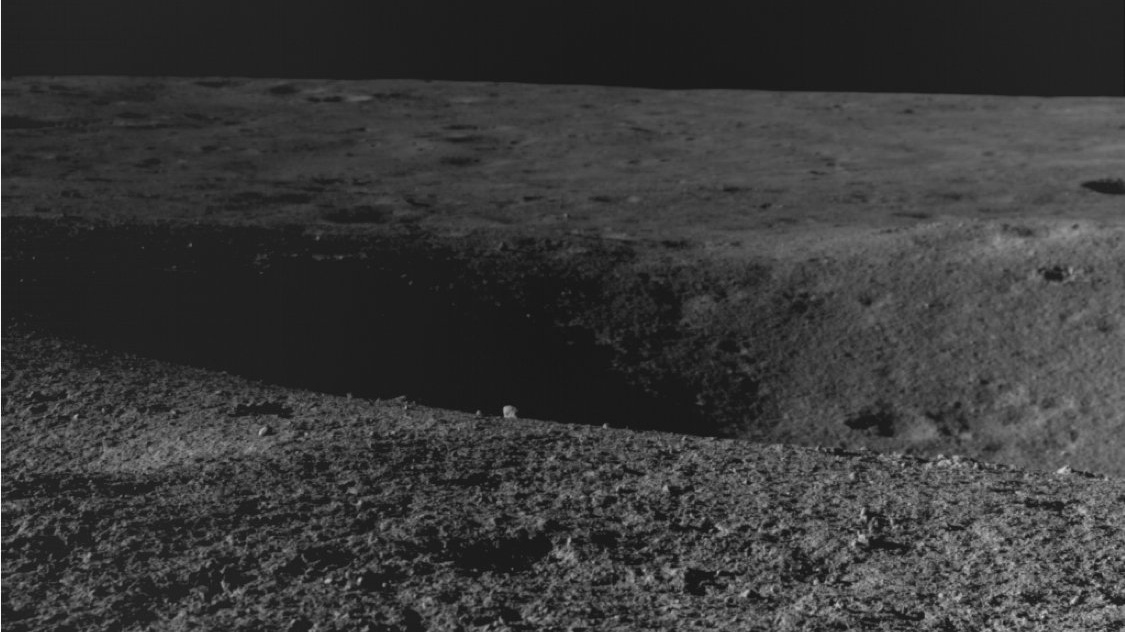India's Chandrayaan-3 takes the moon's temperature near lunar south pole for 1st time
Chandrayaan-3 hits an important scientific milestone.

On Aug. 23, thanks to the success of Chandrayaan-3, India made a strong mark in space history. Not only did it become the first nation to land a spacecraft near the south pole of the moon, but also the fourth to create imprints on Earth's gleaming companion at all. However, the lunar lander's touchdown was only step one of its ultimate story.
Since reaching the moon's south pole, Chandrayaan-3 has been hard at work – having deployed a rover named Pragyan to explore the cratered surface, harnessed integrated cameras to send back videos of its environment and even started completing research objectives planned for a two-week stay on the orb.
On Saturday (Aug. 26), for instance, scientists with the Indian Space Research Organization presented a video on X (formerly known as Twitter) of Pragyan roaming around the mission's landing point, which has been named the Shiv Shakti Point. In the video, the gold-colored moon explorer is seen on the other end of two delicate tracks it has created in lunar soil since exiting the lander that ushered it over there, named Vikram. The gingerly way Pragyan treads on a desolate gray world is almost charming.
Shortly after releasing this update, ISRO also posted a sort of checklist on X saying that, after successful completion of a safe and soft landing as well as Pragyan's deployment, Chandrayaan-3 has begun conducting scientific experiments on site. "All payloads are performing normally," the agency posted on X.
Related: Pragyan, Vikram, Vikas: How did India's Chandrayaan-3 moon mission get its names?
That prelude to lunar south pole science was quickly elaborated upon when, on Sunday (Aug. 27), ISRO posted yet another update on X regarding one of Chandrayaan-3's payloads called the ChaSTE experiment, or Chandra's Surface Thermophysical Experiment.
The purpose of this experiment, in essence, is to use a temperature probe as well as 10 individual temperature sensors to measure temperature profiles of lunar south pole soil. The goal, ISRO explains, is for ChaSTE to help scientists understand what the thermal behavior of the moon's surface is like. And, as it appears, ChaSTE has already found some stuff out.
Get the Space.com Newsletter
Breaking space news, the latest updates on rocket launches, skywatching events and more!
Illustrated by a graph ISRO released, the experiment has probed various temperatures of the moon's surface at different depths, marking the "first such profile for the lunar south pole."
Chandrayaan-3 Mission:Here are the first observations from the ChaSTE payload onboard Vikram Lander.ChaSTE (Chandra's Surface Thermophysical Experiment) measures the temperature profile of the lunar topsoil around the pole, to understand the thermal behaviour of the moon's… pic.twitter.com/VZ1cjWHTndAugust 27, 2023

Detailed observations on that front, the agency noted, are still underway – but if you're wondering what Pragyan is up to, the last we heard, it has come across a dangerous crater. Due to the nature of the lunar south pole, hazards such as this are kind of expected. In fact, that's a major reason for why Chandrayaan-3's landing was such a massive occasion. Though everyone wants to get to the lunar south pole — because it's expected to host solid quantities of water ice — actually landing there is tough because the region is so very covered in craters.
Just about 3 meters (nearly 10 feet) from its location on Sunday (Aug. 27), the rover spotted a crater that seemed to be about 4 meters (13 feet) wide. "The rover was commanded to retrace the path," ISRO posted on X, "It's now safely heading on a new path."
Join our Space Forums to keep talking space on the latest missions, night sky and more! And if you have a news tip, correction or comment, let us know at: community@space.com.

Monisha Ravisetti is Space.com's Astronomy Editor. She covers black holes, star explosions, gravitational waves, exoplanet discoveries and other enigmas hidden across the fabric of space and time. Previously, she was a science writer at CNET, and before that, reported for The Academic Times. Prior to becoming a writer, she was an immunology researcher at Weill Cornell Medical Center in New York. She graduated from New York University in 2018 with a B.A. in philosophy, physics and chemistry. She spends too much time playing online chess. Her favorite planet is Earth.
-
rod So, USA, Russia, China, and now India have gone to the Moon and landed on it. There is no flat moon or flat earth :)Reply -
piuspatel Dear friends,Reply
Latest research of ISRO will be really helpful as below.
ISRO has published moon south pole grade’s temperature gradient. As per the information, temperature on surface is around 70 degree C and temperature at 80mm below grade is around minus 10 degree C. With this much temperature gradient we can develop an electric generator to produce electricity as per ‘Seebeck’ effect. If two plates will be installed, one on grade and second 80mm or deeper and run insulated cable between these two plates, it will produce enough electricity to heat a small room, it also can be stored in batteries to use power during moon night time. This research will be a really useful to make moon more habitable for human exploration. -
piuspatel There are other methods to produce electricity from a temperature gradient besides the Seebeck effect. One interesting approach involves using shape memory alloys (SMAs) like Nitinol (a nickel-titanium alloy) to generate power.Reply
Nitinol exhibits the shape memory effect, where it can “remember” a particular shape and return to it when heated. This effect can be harnessed for energy conversion using a process known as the “thermodynamic shape memory effect” or the “thermoelastic martensitic transformation.”
Here’s a basic idea of how it works:
1. When the Nitinol is heated, it changes shape due to the phase transition from austenite to martensite.
2. As it cools back down, it returns to its original shape, releasing stored mechanical energy.
By cyclically heating and cooling Nitinol with a temperature gradient, you can create mechanical motion, which can then be converted into electricity using various mechanical-to-electrical conversion methods, such as piezoelectric generators.
Keep in mind that while this approach is intriguing, there are challenges and limitations associated with efficiency, cycle life, and the specific design of the device. Additionally, Nitinol-based systems might not produce large amounts of power, but they could be useful for certain niche applications or as part of a broader energy harvesting strategy. -
Unclear Engineer NiTiNOL goes back to its annealed shape when heated, but, when cool is easily bent into any shape. It has been used for making antennas that can be wadded into a ball for transit to someplace like Earth orbit, and the deployed by heating it with an electrical current to make a dish shaped mesh antenna.Reply
It has limitations to how much force it can produce to push on resisting object as it is trying to return to its high temperature shape, and can become a different high temperature shape if it is restrained and heated. (I got a piece to play with when I worked at NOL.) -
piuspatel Nitinol engines are already made by NASA which is working on temperature gradient.Reply
5MW capacity can be possible.
5- Megawatt Nitinol Engine by Mcdonnell Douglas
8-dCIkJAjyMView: https://youtu.be/8-dCIkJAjyM?si=c-uTW96qBFrRBugW via @YouTube -
Unclear Engineer Interesting link, thanks.Reply
But, McDonnell Douglas company only existed between 1967 and 1997, so this has to be at least 26 years old, and maybe more like 50 years old, which is the era that I remember NiTiNOL being a topic of conversation.
So, if it is really so great, why aren't we now using it for irrigation, cheap electricity production in remote locations, etc,. etc.? What didn't actually work out? -
piuspatel The cost of Nitinol might be a factor for payback.Reply
It can be used where solar energy is source. Cost recovery will take more time. -
Unclear Engineer I don't think cost is the problem - you can buy the stuff on Amazon (see https://www.amazon.com/Nitinol-Wire/b?ie=UTF8&node=11260363011 ).Reply
It is currently used for medical devices, so it is not unobtainium. -
piuspatel You may be right but still 5MW may need huge amount of material. Day by day cost has reduced but someone to do cost analysis. I have also seen other video where they used a Nitinol bar/ rod instead of spring or wires. I am not able to find that video.Reply









